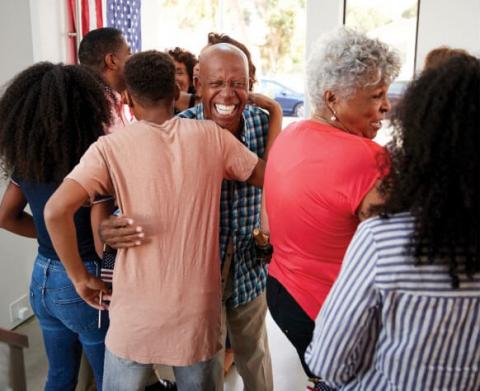
Frequently Asked Questions
About The United Way Toolkit To Becoming A More Equitable Organization
Why This Toolkit, Why Now?
Our mission is to improve lives by mobilizing the caring power of communities around the world and advance
the common good. And, we know that on every measure of well-being, outcomes are predictable based on race and
ethnicity with historical and current policies and practices reinforcing poorer outcomes, particularly for Black
and Latinx communities. In order to achieve our vision of all individuals and families achieving their human
potential, we must take on race, equity and inclusion explicitly. We must understand and address the factors
that impede progress based on race or ethnicity, create more inclusive organizations and communities, and pursue
more equitable outcomes.
This Toolkit is a part of our Blueprint for becoming a Modern United Way. It offers a set of hands-on
approaches and tools to “model diversity, equity and inclusion” in UWW and in all local United Ways as we
continue the work toward more equitable processes and outcomes.
Who Should Use This Toolkit?
This Toolkit is for everyone in the United Way network! The Toolkit is for United Way staff from all functional areas, levels, and backgrounds. We especially encourage those in leadership and those interested in change to use this resource as well as members of Race, Equity and Inclusion Teams at local UWs. You don’t have to be a leader of a team to learn more or begin to implement some ideas. We can all be leaders for racial equity.
How is This Different From Prior Work on Diversity and Inclusion?
Race is one important dimension of diversity, so it’s part of our ongoing work to broaden diversity, deepen inclusion and pursue more equitable outcomes. At the same time, given the centrality of racism in constructing the U.S. economy and shaping the conditions in communities across the country, we have decided to focus more explicit attention on these dynamics.
The Diversity, Equity and Inclusion Team and this Toolkit are introducing a stronger focus on equity, as well as continuing to promote diversity and a more inclusive workplace. The Toolkit lifts up structural and systemic policies and practices as well as well as interpersonal approaches.
What Specific Topics or Tools Can I Find in The Toolkit?
You can find a wealth of tools, from those focused on hiring and other human resource issues, to how to set yourself up well to facilitate these conversations, to sample charters and agendas for a race, equity, inclusion team. The Practice Guide describes the work and then the Workbook has actual tools to use. In addition, each section has links for further learning and action. It also places a strong emphasis on planning a strong and collaborative process.
How Is the Toolkit Set Up?
This toolkit is designed to support you in being bold and effective on your race, equity and inclusion journey. It focuses on what you might consider “getting your own house in order” — building our understanding of the core issues; building our organizational capacity to focus on race, equity and inclusion - so that we can practice equity, building supportive and thriving workplaces for our staff and then more effectively work to support equitable organizations and communities in our work external work.
Whether your United Way is small or large, with few or many staff, you’ll find guidelines, tools and stories here to support you on your journey.
There Are Two Sections:
Practice Guide: This section contains guidance about where and how to begin, or how to design your next steps if you have been on the journey for a while. Within this section, the materials are divided into two parts:
1. Get Ready
- Ground the Case for Change in your Mission and Values
- Build your Team and Map out your Process
- Bring Champions Together and Launch your Process
- Prepare Yourself
- Build Shared Language and Analysis
2. Practice Equity Daily
- Build Equity-Minded Culture, Structures and Systems
- Nurture a Diverse, Equity-Minded Workforce
- Nurture a Diverse, Equity-Minded Board
- Tell Stories Centered on People and Systems
- Design Programs and Policies that are Targeted and Universal.
Workbook: The Workbook contains tools, templates, worksheets and resources to support the actions in the Practice Guide. It is organized around the same two parts as the Practice Guide. Refer to the workbook as you need tools or guidance to take specific steps.
How Do I Begin Using the Toolkit?
We encourage you to start by reading through the Practice Guide to get a sense of the big picture before diving into the Workbook. While the Practice Guide is organized sequentially, feel free to move around based on the questions that are most important to you right now.
Then, if you are just beginning your exploration of race, equity and inclusion principles and practices, you may want to revisit the Get Ready sections as you prepare yourself and your team to launch your process. If you already have a team that is driving your race, equity and inclusion work, you may still find that the Get Ready section offers useful guidance.
In either case, you may find that sections within Practice Equity Daily may be more relevant to some of your stakeholders than others. While it’s useful to have a Race, Equity and Inclusion Strategy Team to help you build your overall plan, you may also find that different ongoing teams or departments may benefit from diving more deeply into one section than another. For example, your senior leaders may focus on the “Build Equity-Minded Culture, Structures and Systems” section, while your human resources team may focus on “Nurture a Diverse, Equity-Minded Workforce” and your communications and fundraising staff explore “Tell Stories Centered on People and Systems.” It will be important for your Race, Equity and Inclusion Strategy Team to ensure that these various pieces of work are aligned and add up to a coherent whole.
How is UWW Leadership Supporting This Work?
There is strong commitment from UWW Leadership, and we see this as an ongoing part of modern United Way work. Our (UWW’s) commitment is being expressed by supporting this Toolkit, ensuring that the entire UWW staff participate in ongoing training and building racial equity into our team’s annual goals.
What Support Can UWW Offer to Local UWs or Teams Who Are Using the Toolkit?
Stay tuned for future learning opportunities in 2020 that explains the Toolkit and how you can use it. In 2020 we will also offer more in-depth training and support for implementation.
For Questions and Support in Implementing This Work in Your UW, Contact:
Marveen C. Hart
Senior Director, Diversity, Equity and Inclusion
United Way Worldwide
@email
Geniro T. Dingle
Manager, Diversity, Equity and Inclusion
United Way Worldwide
@email




